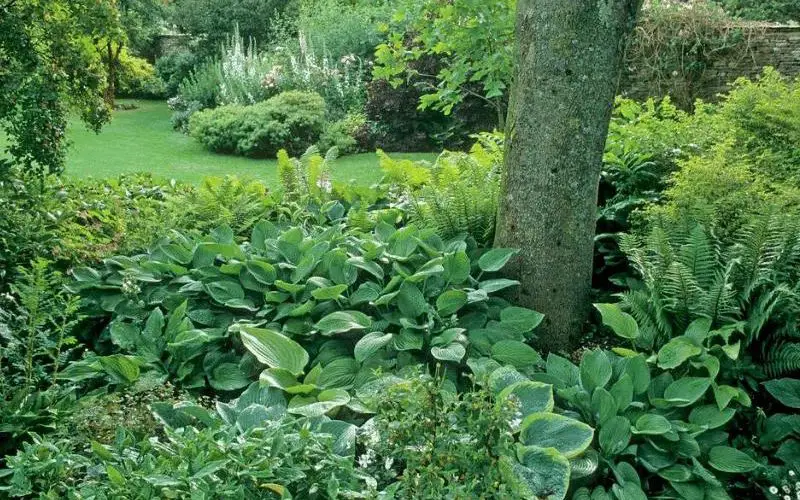If you’ve got pine trees in your backyard, you would have noticed that you hardly find other plants growing under them. Even if you attempt to grow certain plants or shrubs, you will notice that they usually die after some time.
Many believe the myth that “nothing grows under pine trees,” and their position is not unfounded because most plants can’t survive planted under pine trees.
However, several shrubs, flowering plants, and ground cover plants are suitable for planting under pine trees, including Persian violet, daffodils and a few more.
Why Can’t Lots Of Plants Grow Under Pine Trees
It is a fact that many plants grown near pine trees will develop problems, and eventually, in fact, many of them might not even germinate. While many will come up with some superstitious reason for this, there is a scientifically valid reason for this phenomenon.
The ground underneath a pine tree is usually barren, mainly as pine needles cover it. The reason is the acidity on the tree roots and the shade the pine gives.
Pines grow in very acidic soil with a pH value of 4-7, which is too acidic for most plants. The fact is that even if you plant a pine tree in alkaline soil, as time goes on, the pine will turn the soil acidic.
That happens because acidic pine needles continuously drain their acids into the soil, lowering its pH and making it mildly acidic.
The other reason many plants won’t grow underneath is that their canopies provide shade all year round to the plants underneath, which are often very thick. Since plants need sunlight for photosynthesis, many will not thrive under constant shade.
What Is The Best Ground Cover For Under Pine Trees?
Since most plants can’t be underneath pine trees because of their acidic nature, it is evident that the only plants that can grow there are acid-loving plants that can withstand shade and drought.
Here are some acid-loving plants to grow underneath pine trees:
Daffodil (Narcissus spp.)
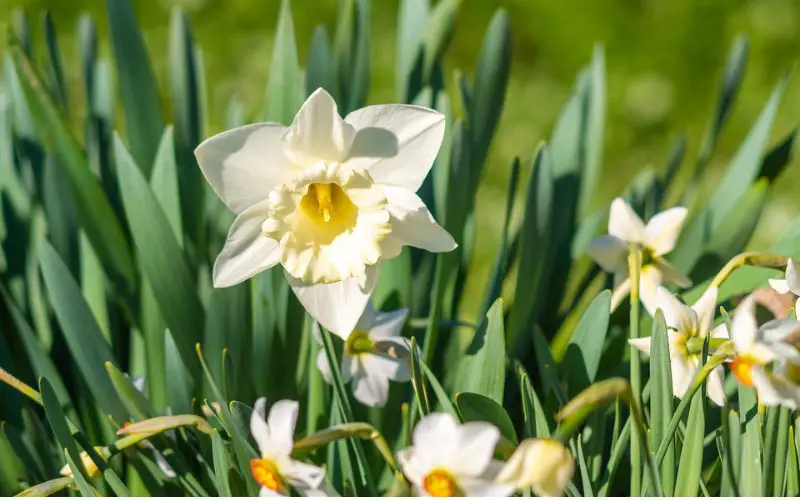
Daffodils are aromatic plants which grow well under shade, especially underneath many types o trees, including pine trees. This fragrant flower plant, synonymous with spring, is a vigorous plant that adapts well to woodland habitats, like under the thick canopies of needles from pine trees.
The beauty of daffodils is that they require little maintenance as they quickly propagate independently.
They do well under full sun and partial shade and can grow to a height of 2 feet and a 3-inch spread. Daffodils thrive in USDA hardiness zones 3 to 9, blooming in late spring.
They are drought-tolerant species that love medium fertile and well-drained loam, clay, chalk or sand-based soil that are slightly acidic.
Persian Violet (Cyclamen coum)
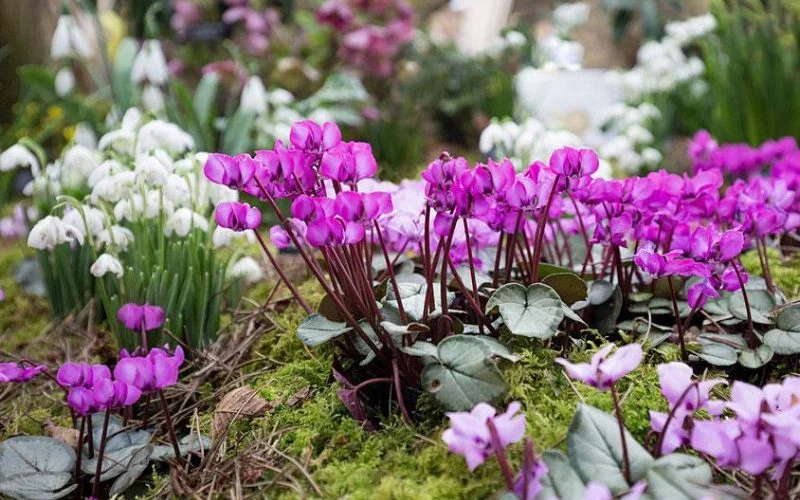
It is a prevalent plant you will find where there are lots of pines. This plant can thrive in places with carpets of pine needles and lots of shade.
This plant has distinct rosy purple petals, broad, dark green and heart-shaped leaves with lighter spots.
Persian violet thrives in USDA zone 4 to 9, blooming in winter and early spring. They thrive in well-drained fertile and humus soil with a pH value of 5.0 to 70. Under ideal conditions, it can grow to 3 to 6 inches and 8 inches in spread.
Dwarf Crested Iris (Iris cristata)
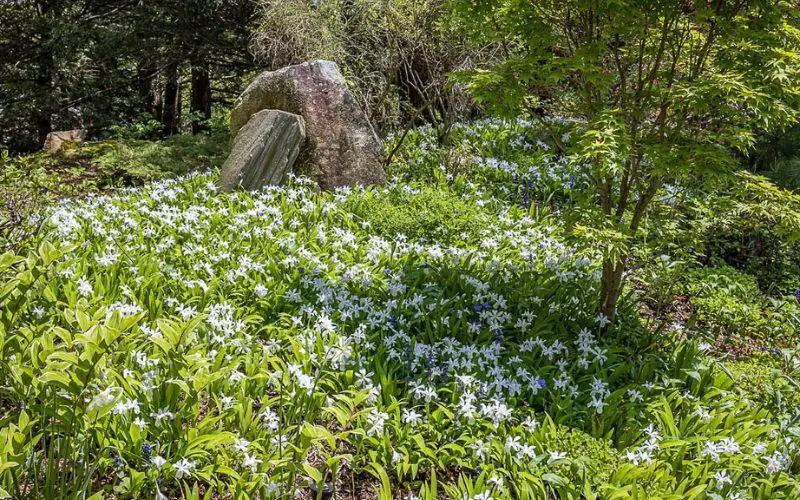
It is a low-growing perennial plant that forms clumps of sword-shaped leaves which grows directly from the soil, where the rhizomes spread very quickly. You can plant underneath pine trees. They are shade-loving plants that thrive in acidic soil.
Dwarf crested iris is ideal for woodland because they love humid places with well-drained and fertile soil.
They are the favourite plant to grow by many gardeners because they are easy to grow under USDA hardiness zones 4 to 10. The blue-violet flowers of this plant come in groups of 3
Grape Hyacinth (Muscari armeniacum)
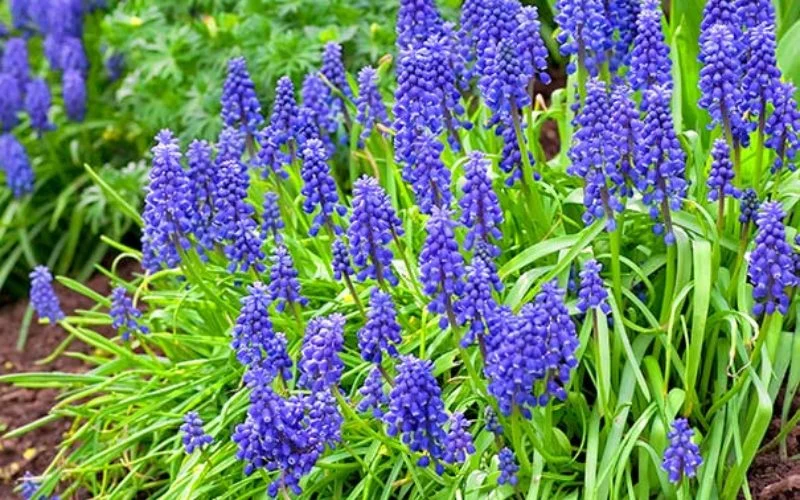
It is another plant that can naturally grow underneath pine trees. This plant which is native to temperate woodlands has deep blue bell-shaped flowers that blossom all at the same time, which leaves the ground looking so bright and beautiful.
The grape hyacinth leaves usually fall off immediately after the blooms are spent.
Grape hyacinth, a bulbous flowering perennial, is an easy plant to grow, which is low maintenance and can grow under shade and the full sun once planted under ideal conditions.
It thrives under USDA zones 4 to 8 with well-drained and fertile soil. It does well in acidic to mildly alkaline soil and can grow to a height of 20cm, all things being equal.
White Trillium (Trillium grandiflorum)
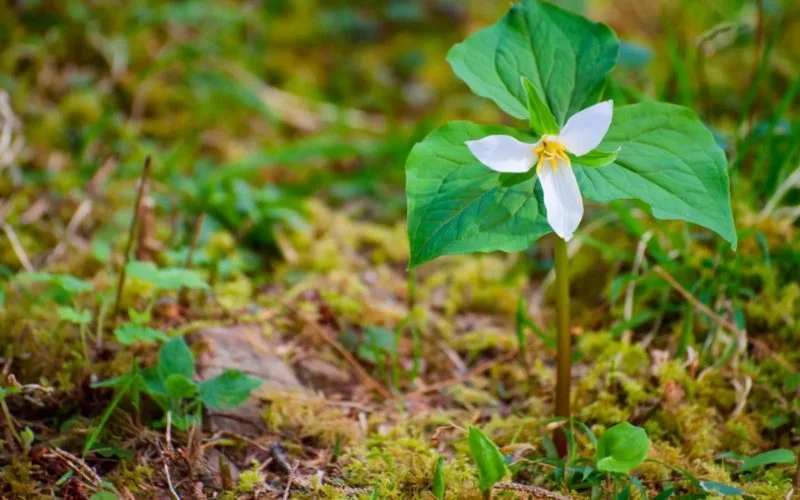
It is a very showy perennial flower plant whose large flowers are the colour of snow while the organs are bright yellow. They usually grow to become a dense clump of green foliage, especially with their decorative leaves that are pretty broad and pointed.
White trillium is a wise choice to grow under pine trees because it is easy to grow with beautiful showy petals, tolerates acidic soil well, and can grow under shade or full sun.
This plant can grow to almost 2 feet in height and 1 foot spread under a humus-rich, humid loam or sand-based soil that is well drained.
Columbine (Aquilegia spp.)
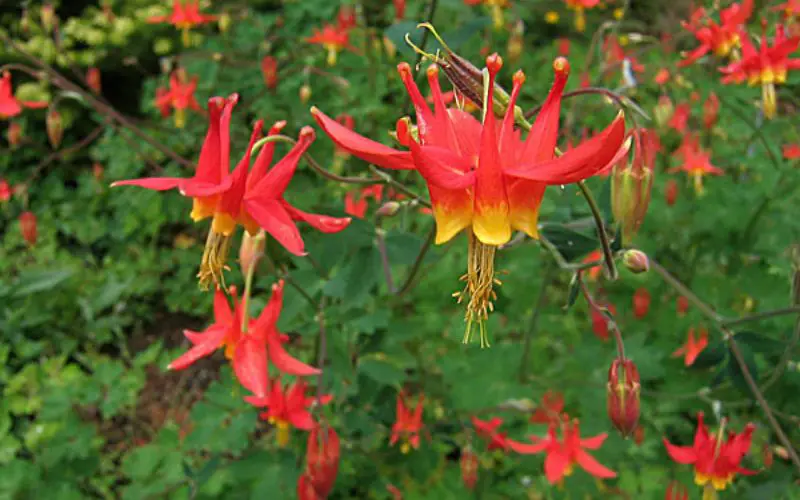
It is another perennial plant with a wide range of colors, with its nodding blooms having white to purple, yellows, pinks, reds, oranges and hues of blue and violet.
This plant, especially the young ones, loves acidic soil and shade, so it is a great variety to plant under pine trees.
Columbines have different species, but the natural species are always better to plant underneath pine trees in hardiness zones 3 to 9 or 4 to 8. ideally, it can grow to a foot spread and a height of 2 feet.
Wintergreen (Gaultheria procumbens)
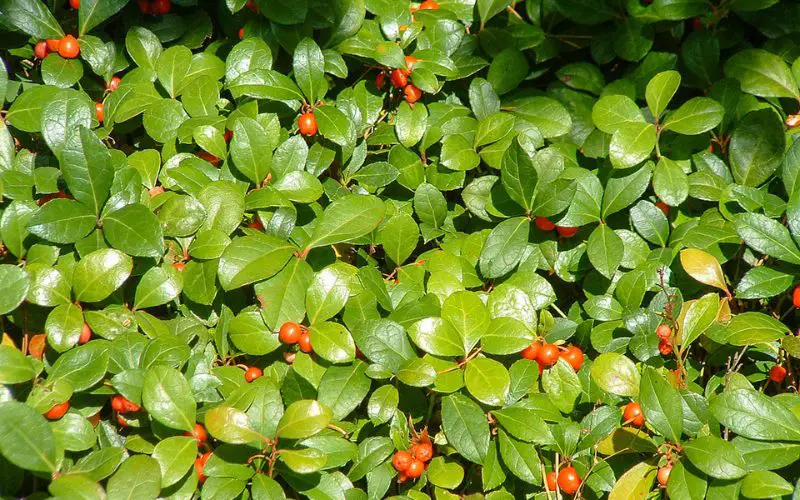
Wintergreen is a good option if you want a low shrub to grow under pine trees that can tolerate acidic soil and shade. This plant has broad, glossy, oval, and leathery leaves, while its flowers are bell-shaped and white with a touch of pink in summer.
These evergreen plants have bright red and shiny berries that love like small apples that stay on throughout the colder months and into spring.
It blooms in July and August and needs fertile and organically rich and well drained but regularly humid loam, clay or sand-based soil with acidic pH (4.5 to 6.5). It will tolerate neutral.
Hydrangea (Hydrangea spp.)
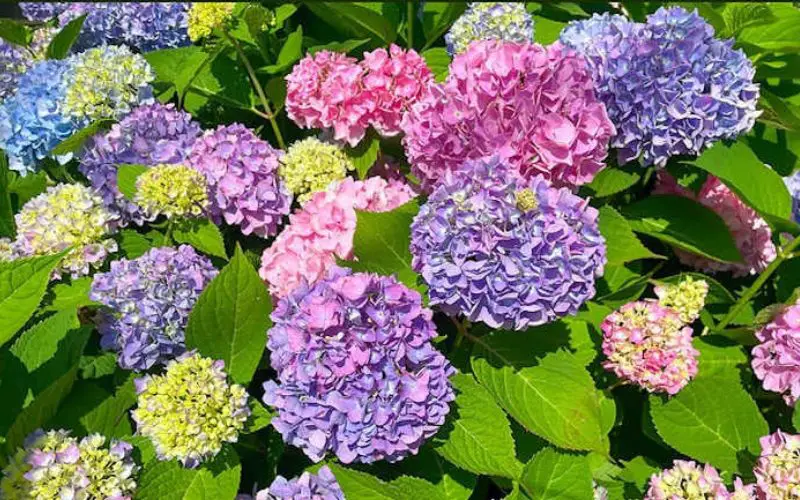
Hydrangea is an excellent flowering shrub for planting under pines because they like acidic soil, shade and the protection offered by pine trees. This plant will grow up to 10 feet under pine trees with its spread almost as much.
Hydrangea blooms come in shades of purple to white, including reds, oranges, pinks and even greens. These flowers are large and have thick clusters which can last for months. Hydrangea has different varieties. Some of them are dwarf varieties, and so might not grow like others.
To grow hydrangea under pine trees, mulch them regularly to preserve soil humidity and nutrients. Secondly, you should not be planted near the trunk. Instead, they grow at the edges of the shaded area cast by the canopy.
Daylilies
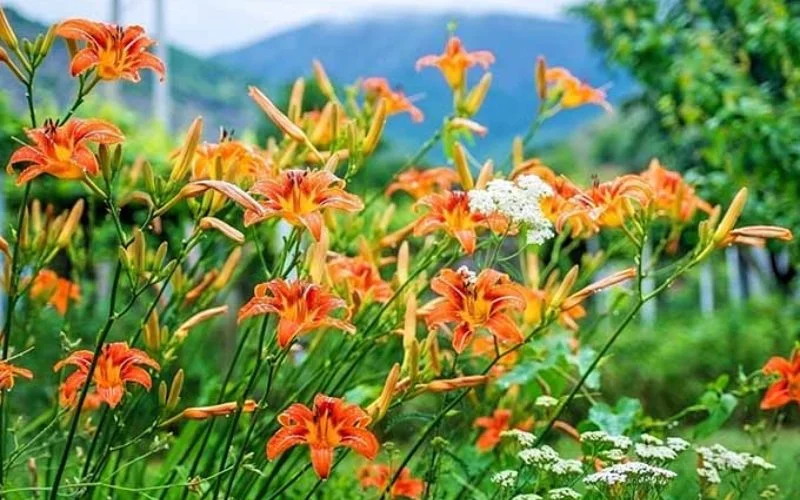
Daylilies bloom from summer to fall at hardiness Zone 4 – 9, and they can grow to almost 3 feet under ideal conditions. These plants are hardy plants that can withstand little moisture and lots of shade. They come in many different colours, from yellow to red, pink and orange.
Daylilies love vibrant soil with average humidity and can grow almost everywhere, even in acidic soil, as you have in places where pines are planted. They will grow under shade even with low maintenance.
Conclusion
Having pine trees around you can have their merits and demerits, and one of its disadvantages is that they can make the soil too acidic for most plants to thrive.
Secondly, they can provide too much shade that can prevent other plants underneath them from getting the much-needed sunlight they need to grow. But plants like Columbine, hydrangea, wintergreen and others love the shade and can tolerate acidic soil.
Helpful Links:
- How Many Heads of Cauliflower Per Plant
- Do Broccoli Plants Produce More Than One Head?
- How to Plant Garlic Heads
- Can you Plant the Seeds from a Sunflower Head?
- What Do Goat Head Plants look Like
Follow us on Facebook, Instagram, and Pinterest for interesting updates.

